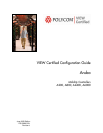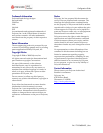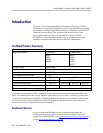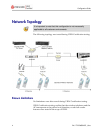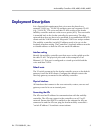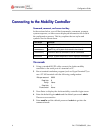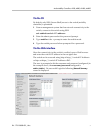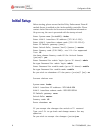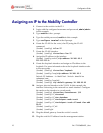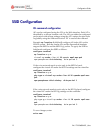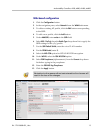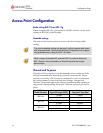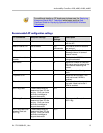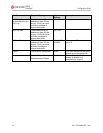
Aruba Mobility Controllers: A200, A800, A2400, A6000
PN: 1725-36080-001_J.doc
5
Deployment Description
It is a SpectraLink requirement that voice users be placed on a
separate VLAN (e.g., VLAN 10) and data users on a separate VLAN
(e.g., VLAN 25). The voice and data VLANs reside on the Aruba
mobility controller and not on the access points (APs). The user traffic
is tunneled back to the Aruba controller for processing. The edge
network thus does not have to be modified to accommodate the WiFi
clients and the VoWiFi network. Map each VLAN to a unique subnet.
The mobility controller (switch) IP address needs to be set via the
loopback interface setting. The Controller’s loopback address must be
a routable address so that the APs can reach this address.
Interface setting
Identify the mobility controller port that serves as the uplink port for
the data VLAN. The physical port used in this example is Fast
Ethernet 1/0. This port is configured as a trunk port with both the
voice and data VLAN.
Default route
The L3 switch connected to the Aruba controller serves as the default
gateway for all the WiFi clients. Configure the default route to the
next-hop gateway connected to the mobility controller.
Physical interface
All interfaces that connect to the core networks, routers, servers and
gateways need to be set as trusted ports.
Connecting the APs
The APs need an IP address for communication with the mobility
controller. The APs can connect to the controller over a L2 or L3
network. Ensure that DHCP is enabled on the subnets the APs are
connected to and the APs can ping the Aruba mobility controller’s
“switch IP address” from their current subnet.



